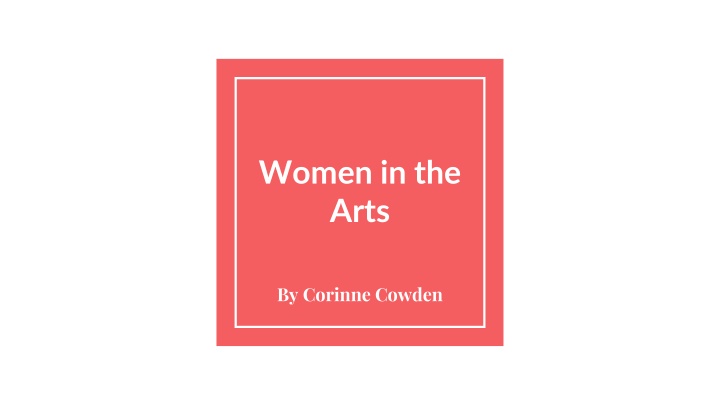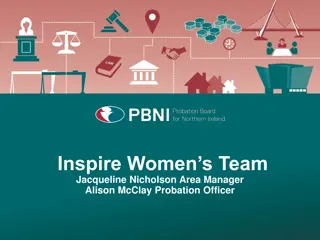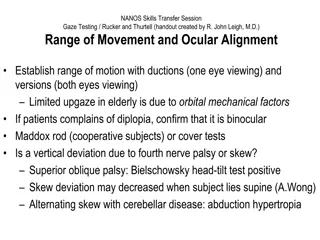Women in Arts Through History: From Male Gaze to Empowerment
Explore the portrayal of women in the arts, from being objectified through the male gaze to empowerment and creativity. Discover iconic figures like Julia Morgan and Josephine Baker who defied norms and made significant contributions in art and architecture. Unveil the stories behind famous artworks and landmarks influenced by influential women such as Catherine de Medici. Delve into the evolution of women's representation in the art world and their journey towards recognition and equality.
Download Presentation

Please find below an Image/Link to download the presentation.
The content on the website is provided AS IS for your information and personal use only. It may not be sold, licensed, or shared on other websites without obtaining consent from the author.If you encounter any issues during the download, it is possible that the publisher has removed the file from their server.
You are allowed to download the files provided on this website for personal or commercial use, subject to the condition that they are used lawfully. All files are the property of their respective owners.
The content on the website is provided AS IS for your information and personal use only. It may not be sold, licensed, or shared on other websites without obtaining consent from the author.
E N D
Presentation Transcript
Women in the Arts By Corinne Cowden
Male Gaze The concept of the male gaze was first introduced by Laura Mulvey, a british feminist film theorist, in her most well know essay titled: Visual Pleasure and Narrative Cinema. The male gaze is evident within many pieces in our current society. Commercials, films, magazine covers, etc. Laura Mulvey claims that women are objectified in Hollywood films because straight men were in control of the camera.
Male Gaze in the Louvre La Charit romaine by Atelier de Jean Goujon Roman Charity, the story of Pero who secretly breastfeeds her father (Cimon) after he is sentenced to death by starvation.
Male & Female Gaze in the Louvre The Intervention of the Sabine Women by Jacques Louis-David The painting features Hersilia (white dress) between her Sabine father, and her Roman husband. In the original, David had included a full frontal nude male body - but had to cover the private area as critics claimed women should not be subjected to such imagery. It is argued that David included the bare men alongside the women to appease to the female crowd, specifically his ex- wife, whom he later remarried.
Chteau de Chenonceau Designed in part by Catherine de Medici Catherine de Medici designed the labyrinth that sits within the gardens. It is said that she used the maze as a form of meditation. To go into the maze to lose yourself, only to find yourself when you find the way out. This ch teau received many different designs and remodels over the course of its years from each lady who was the mistress of the home.
Ecole des Beaux-Arts Fine Arts Academy in Paris, France Julia Morgan, an American architect, was denied admission in 1896 as the Ecole had never accepted women before. Two years later, she was finally admitted and became the first woman to receive a certificate in architecture. Morgan made a name for herself in California, designing countless buildings (nearly 800) within the span of her career. Her most famous design is Hearst Castle.
Women of Color in the Arts Josephine Baker A dancer, civil rights activist, and French Resistance aid. Baker traveled to Paris to perform in La Revue N gre at the Th tre des Champs-Elys es (Located near the Eiffel Tower). Was sexualized, and often the center of male attention when dancing due to performing in minimal clothing, along with provocative dance moves.
Intersectional Feminism The first couple waves of feminism was designed by and for the promotion of white women within society. To this day, there is still a fight over what feminism stands for. Intersectional feminism calls for equal access to resources. It does not exclude women of color, LGBTQ+, or disabled. It does not exclude those within lower classes. Intersectional feminism protects and fights for the equality of ALL women.























